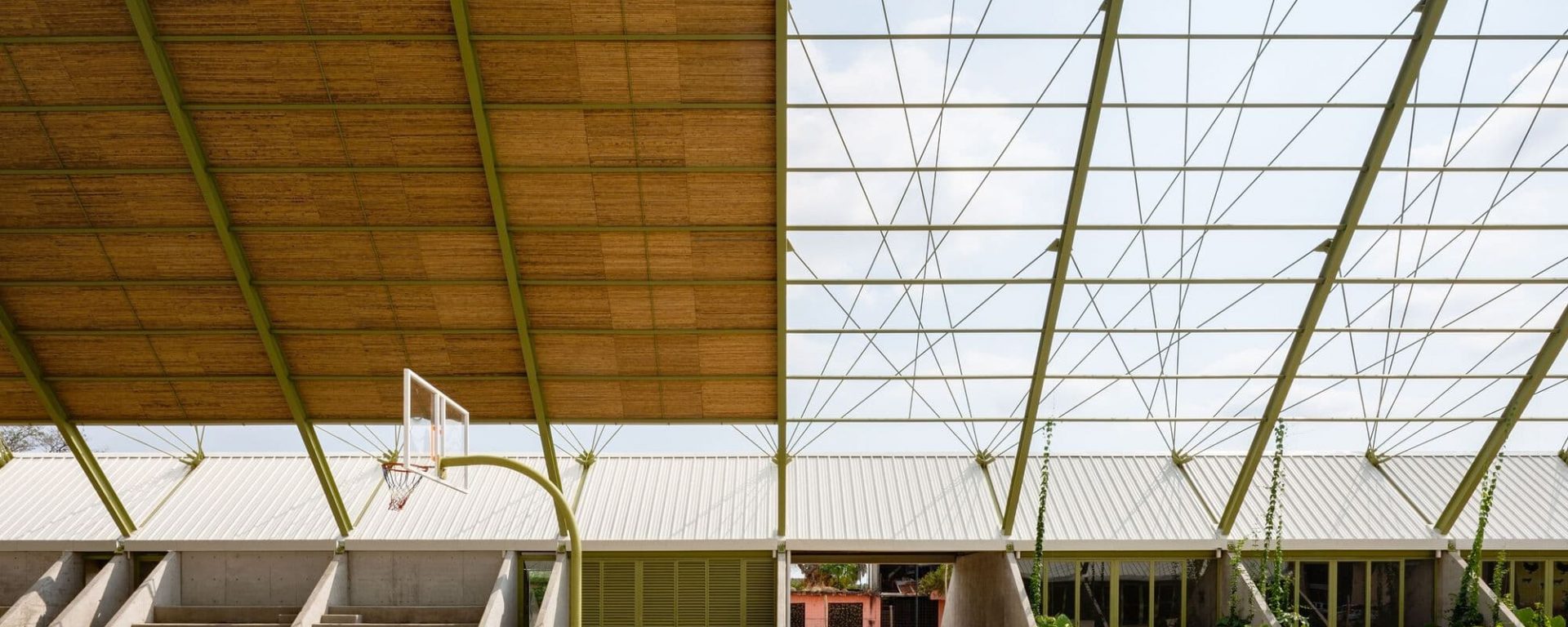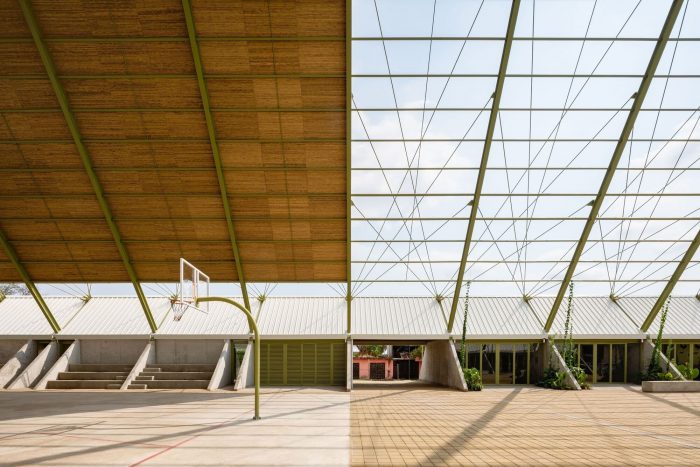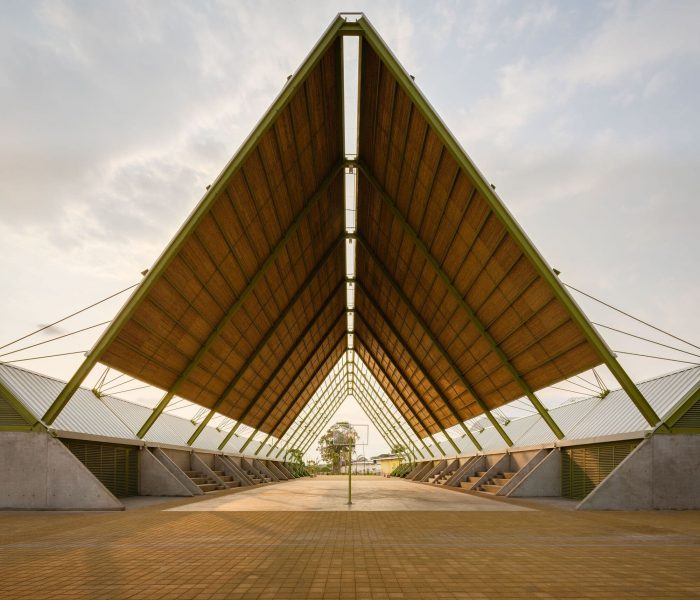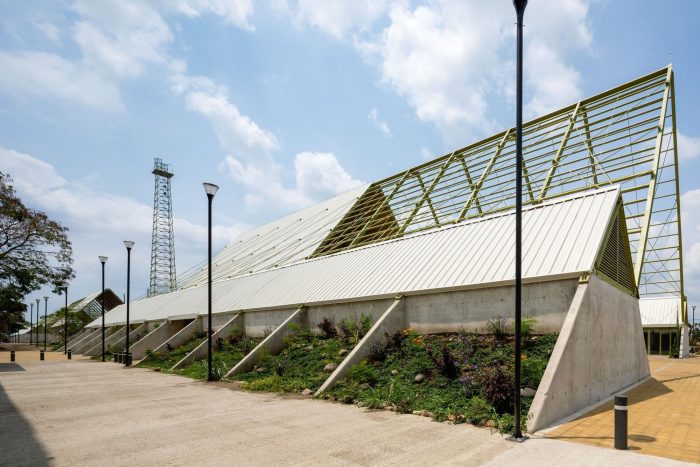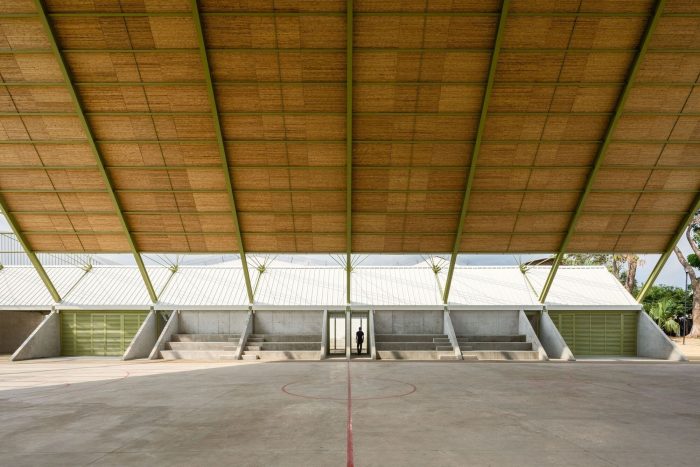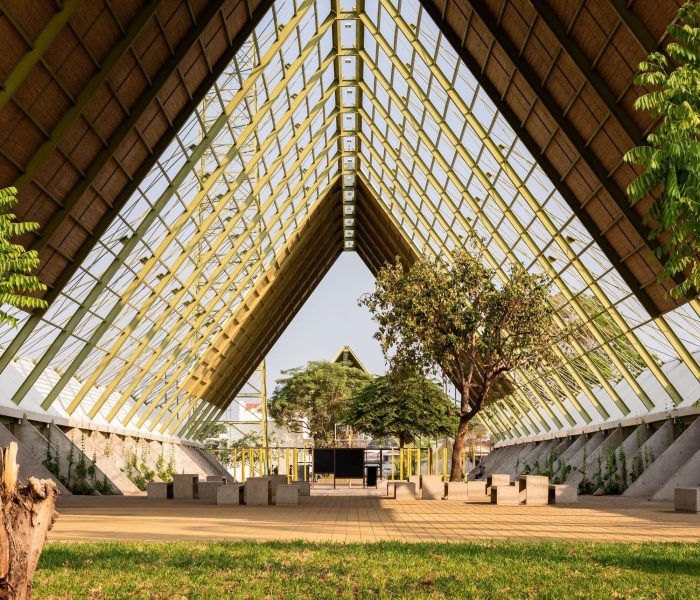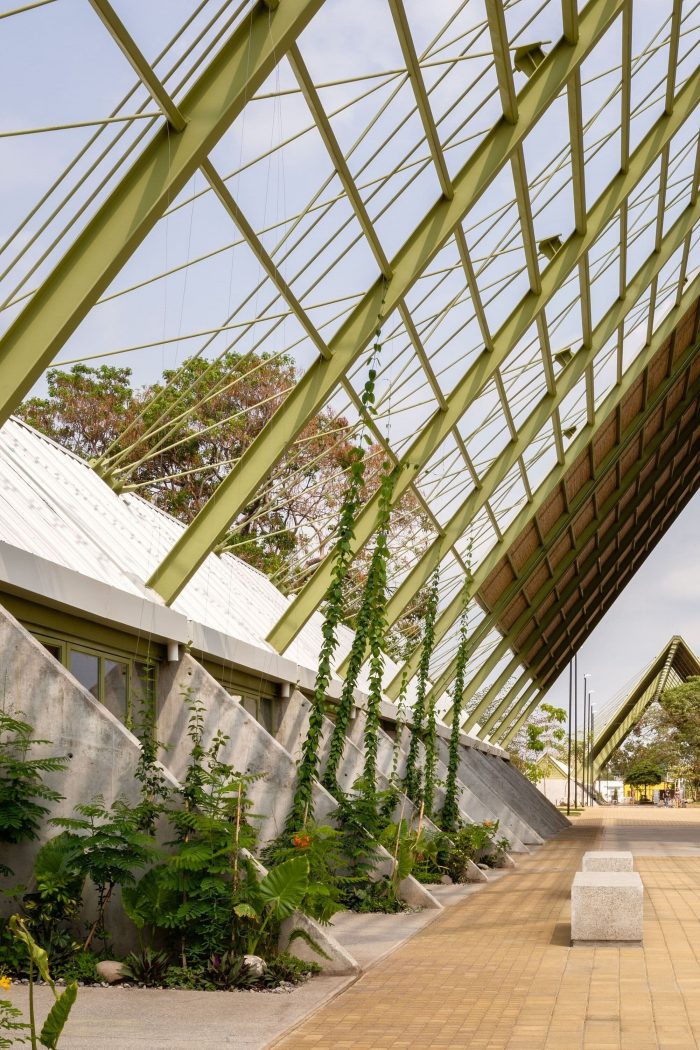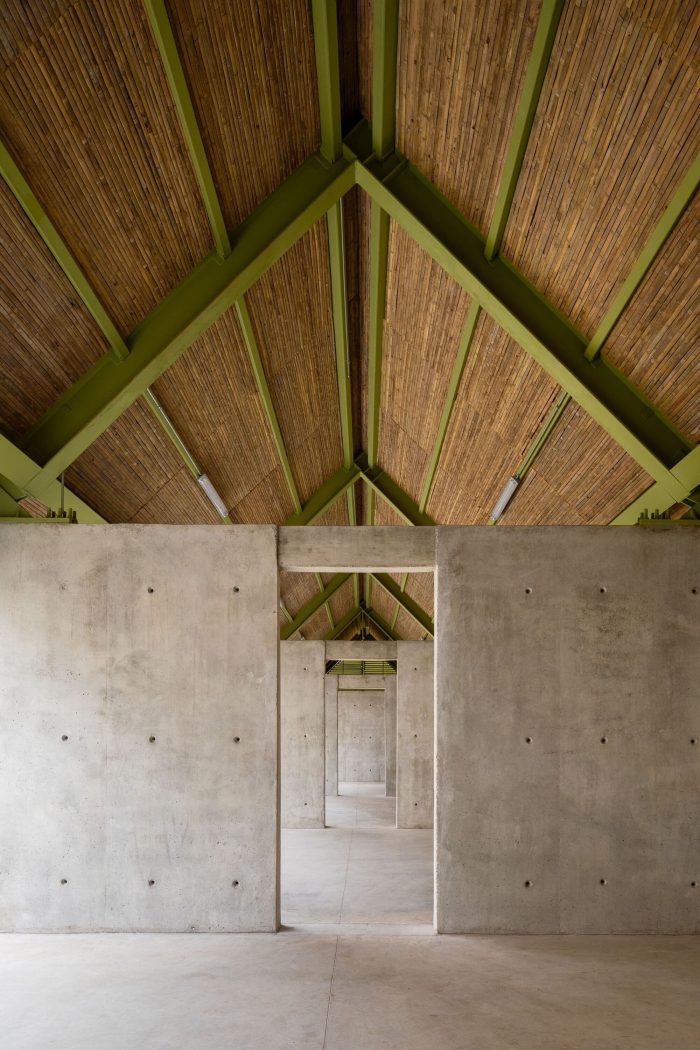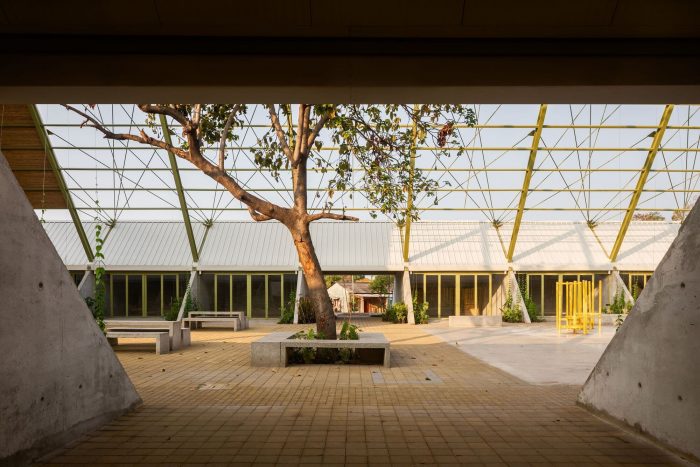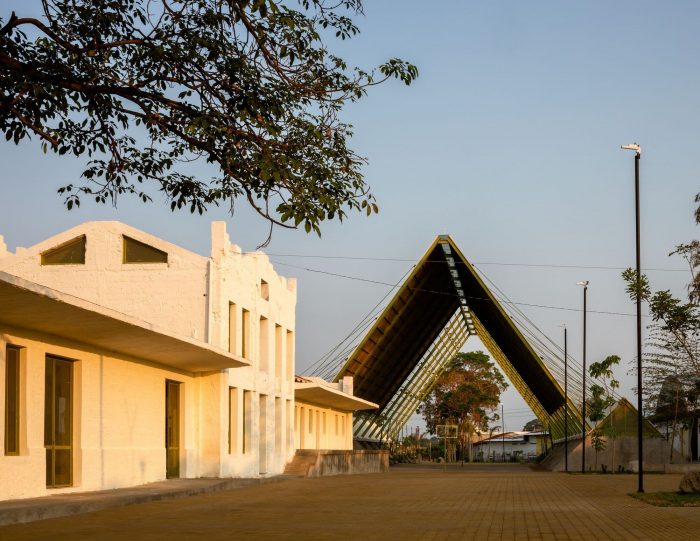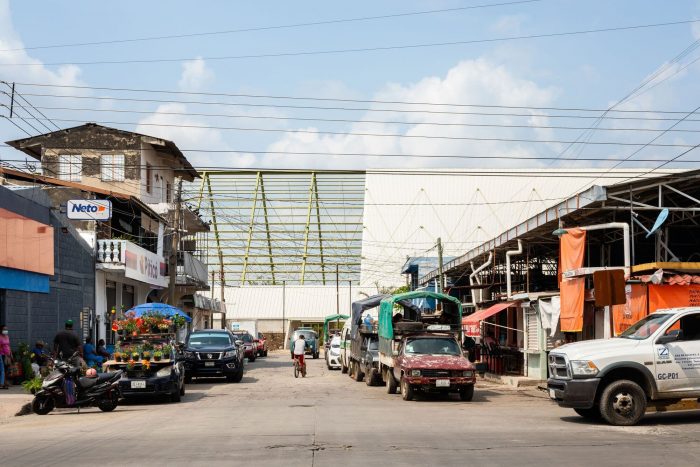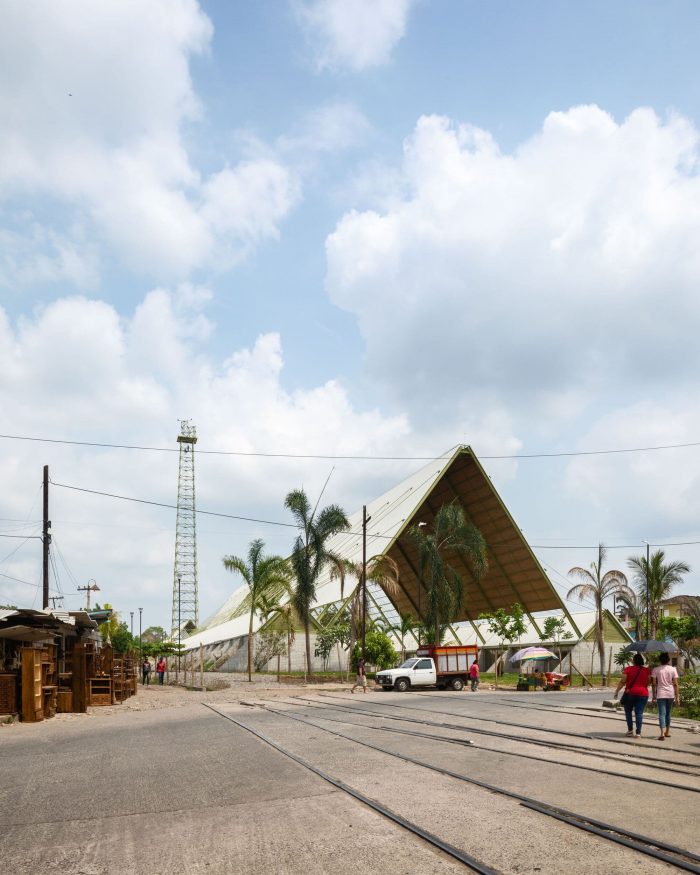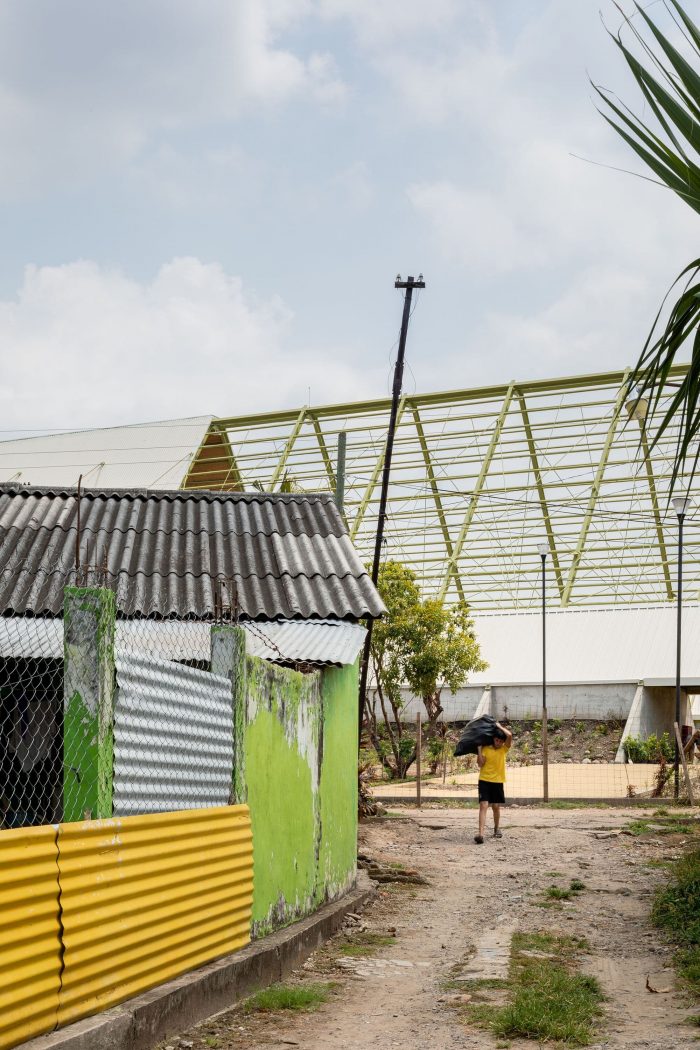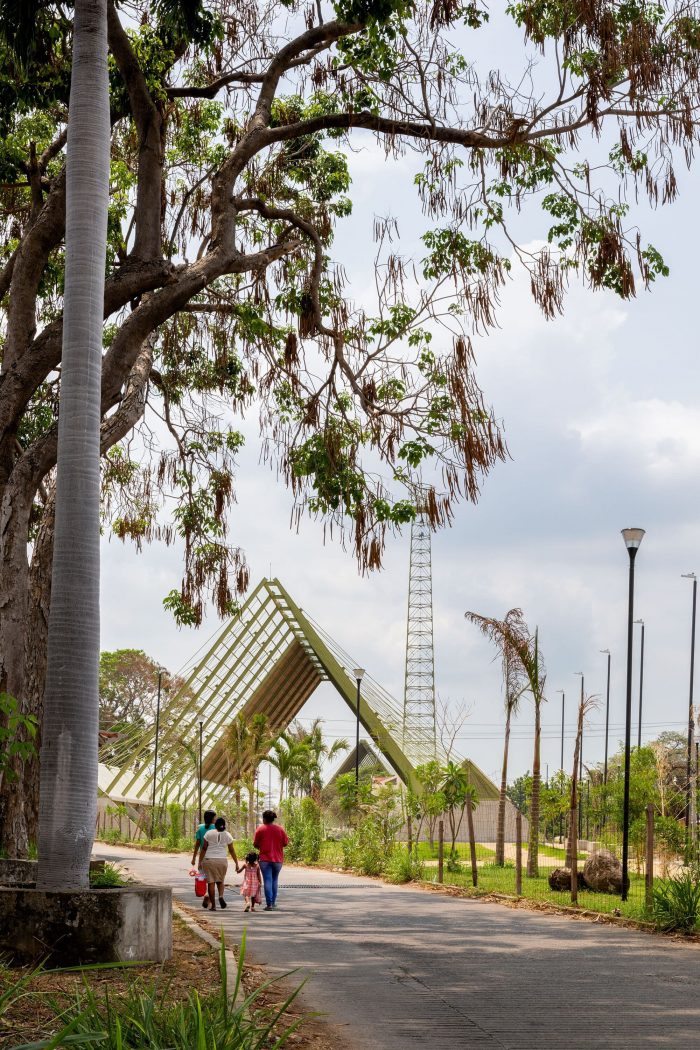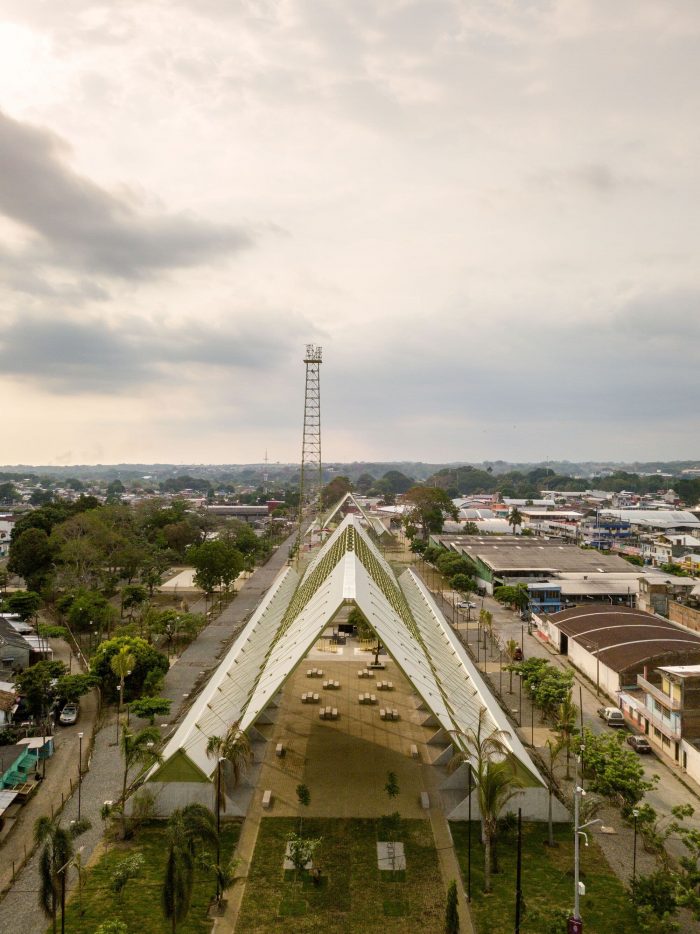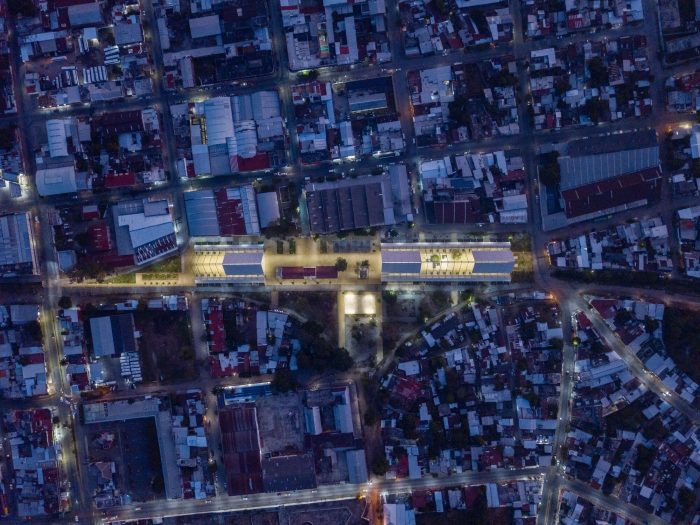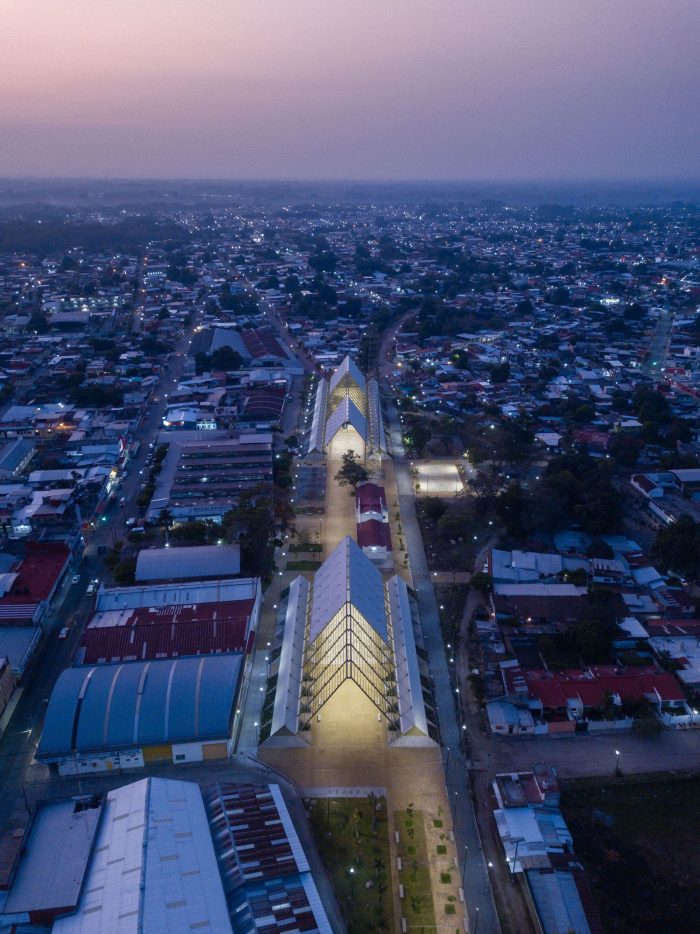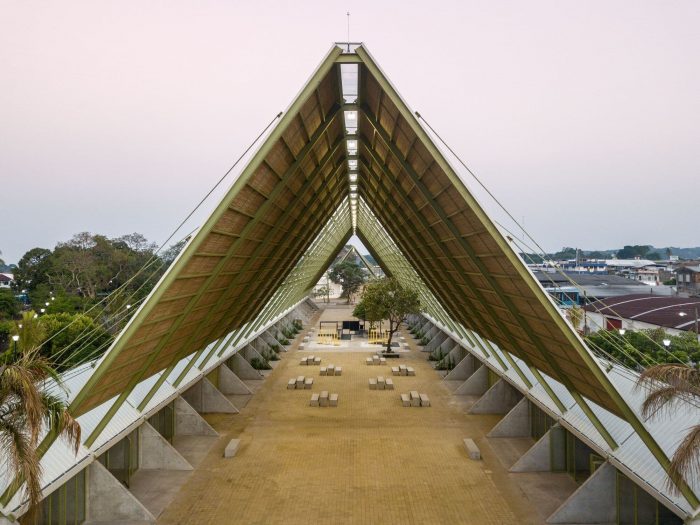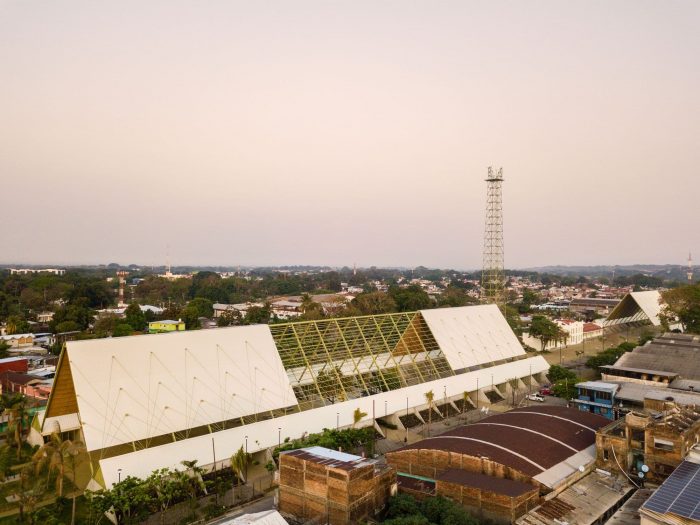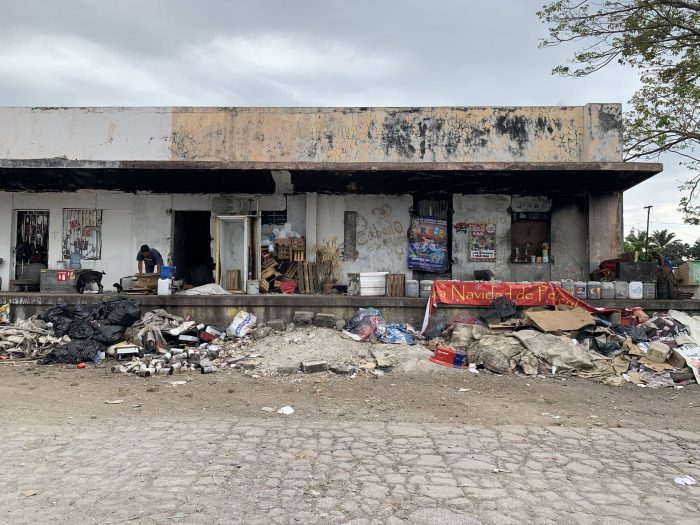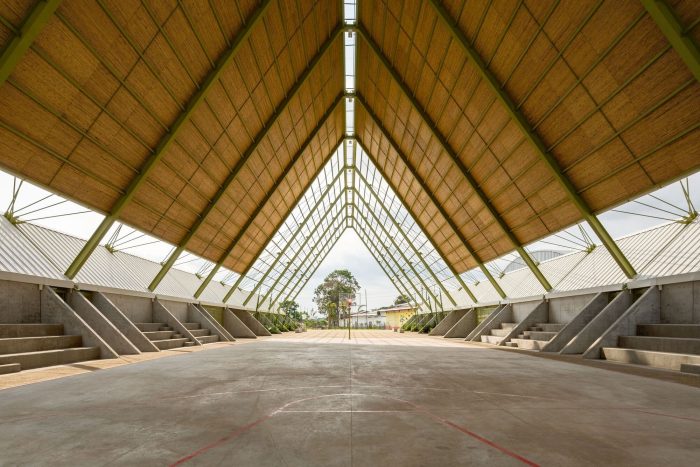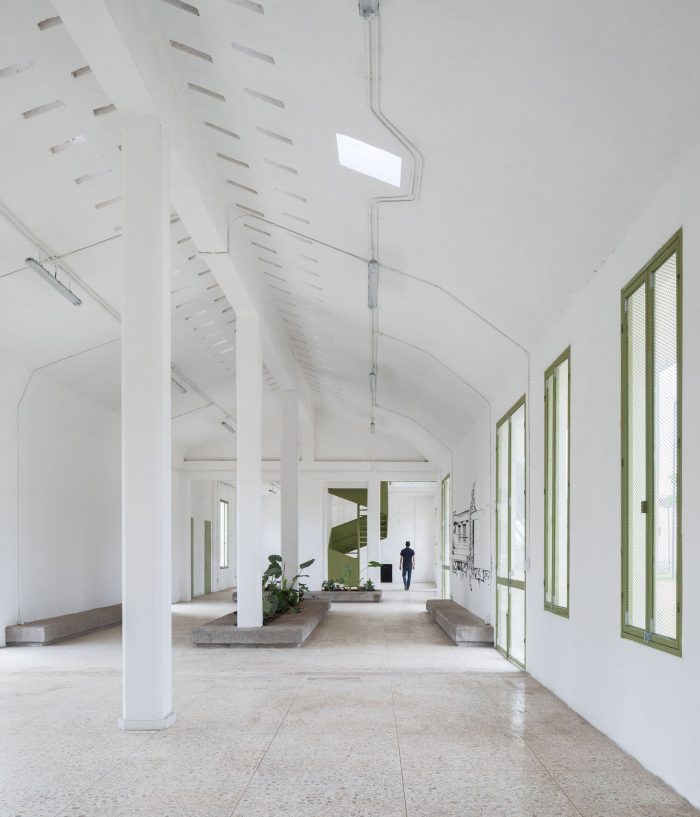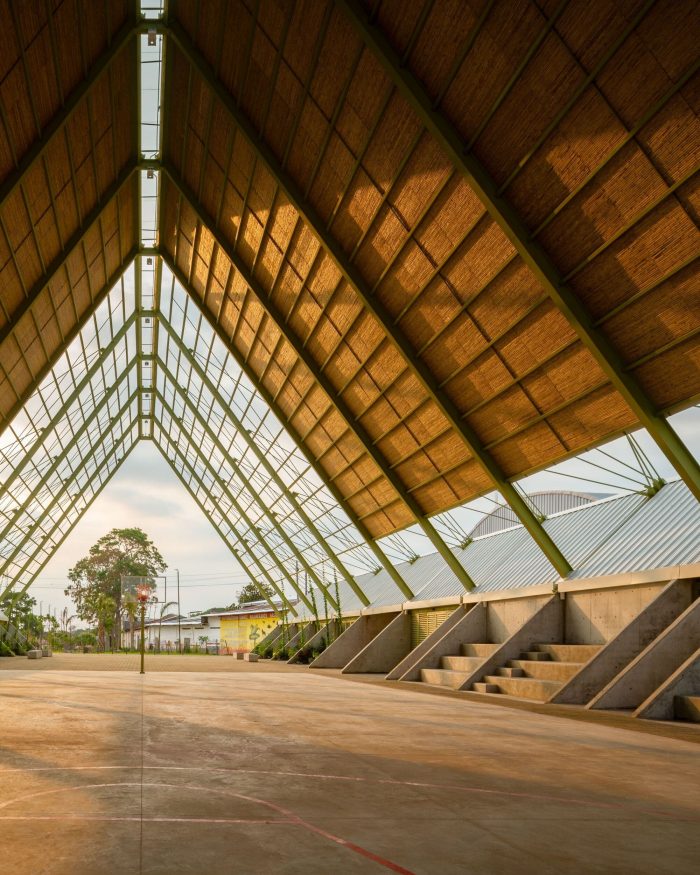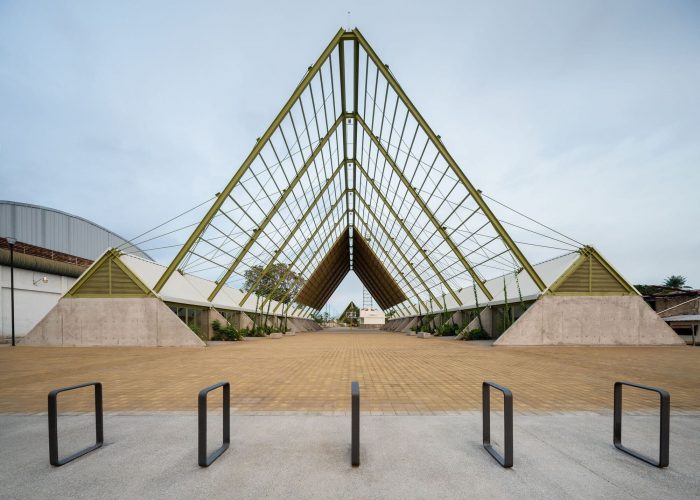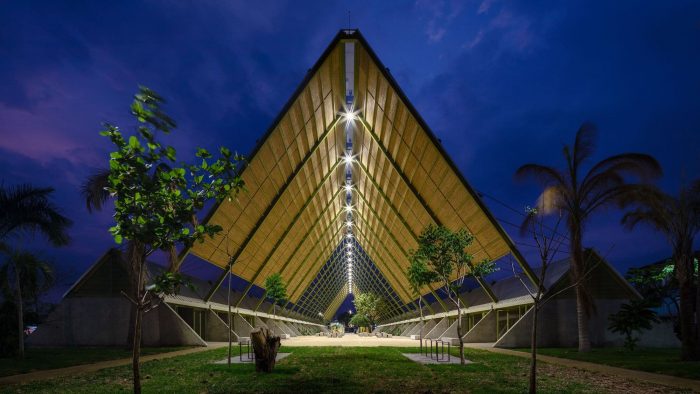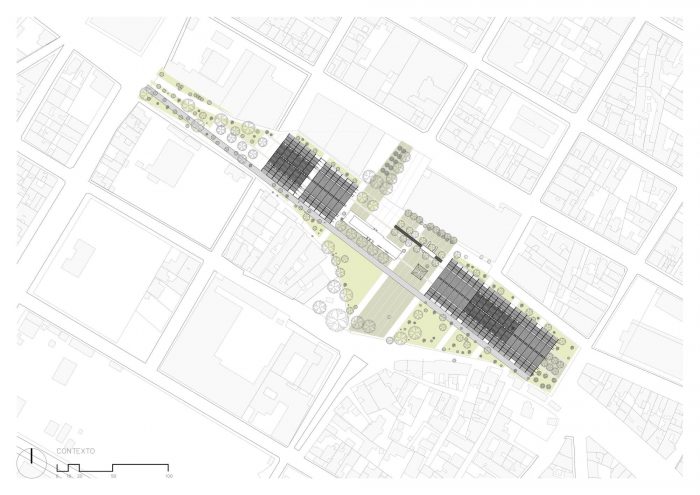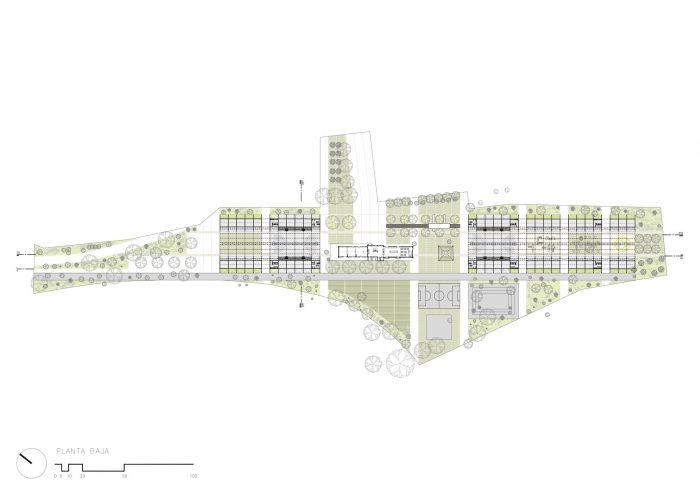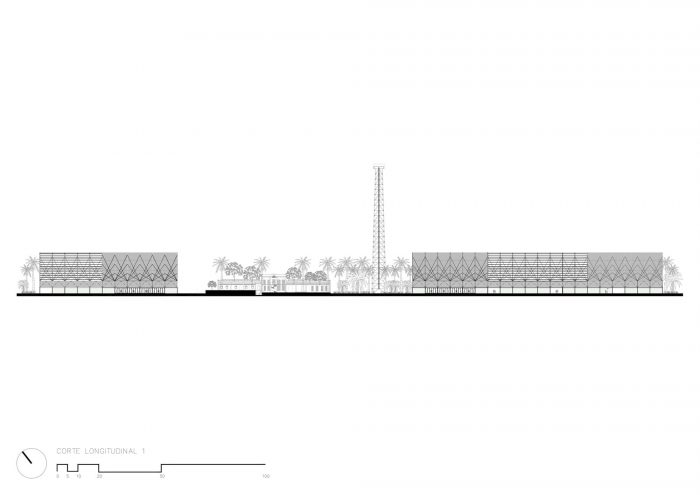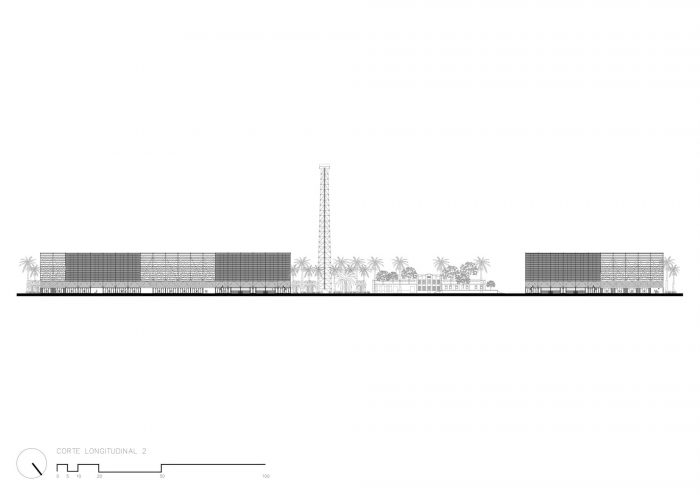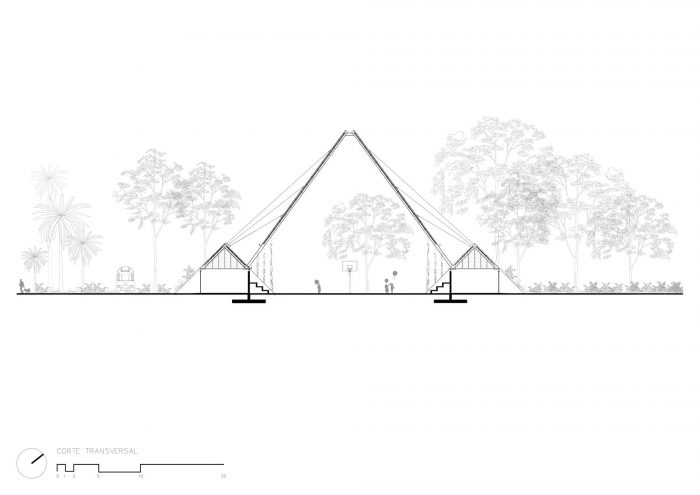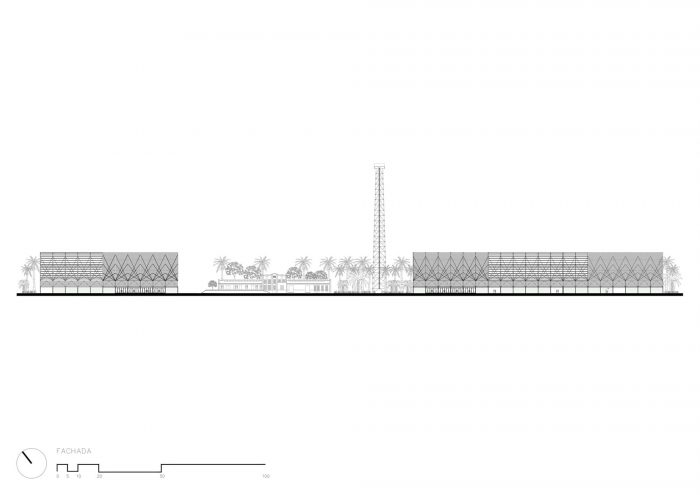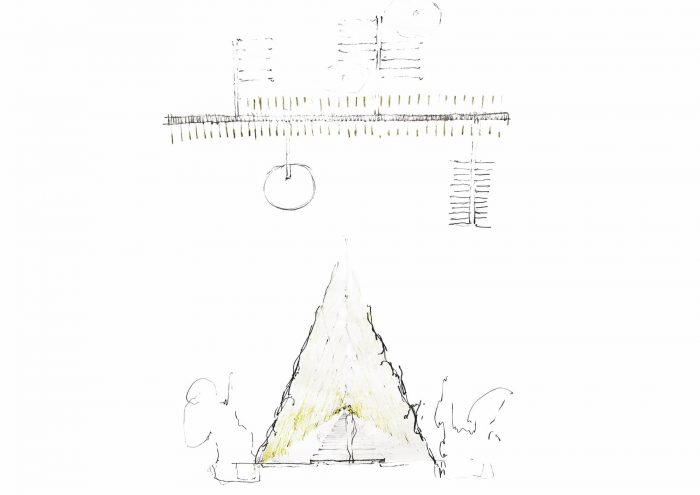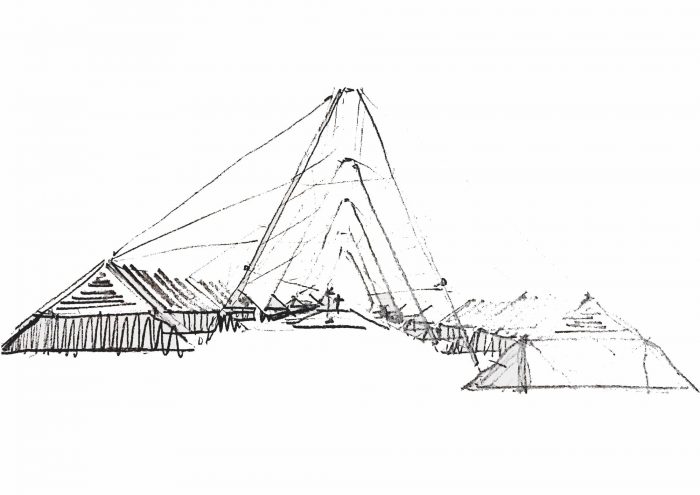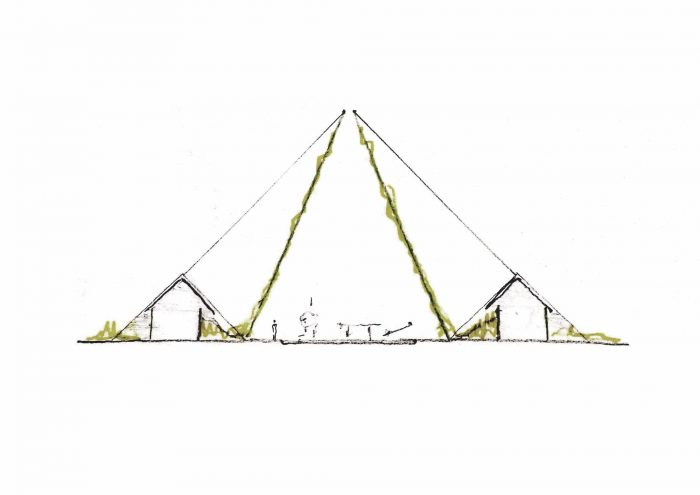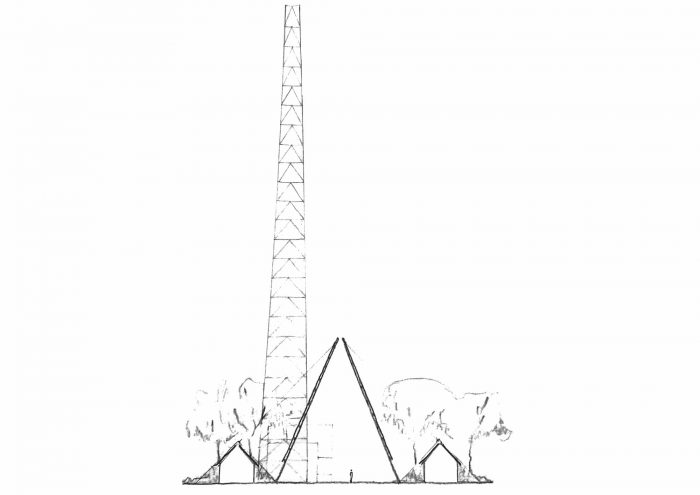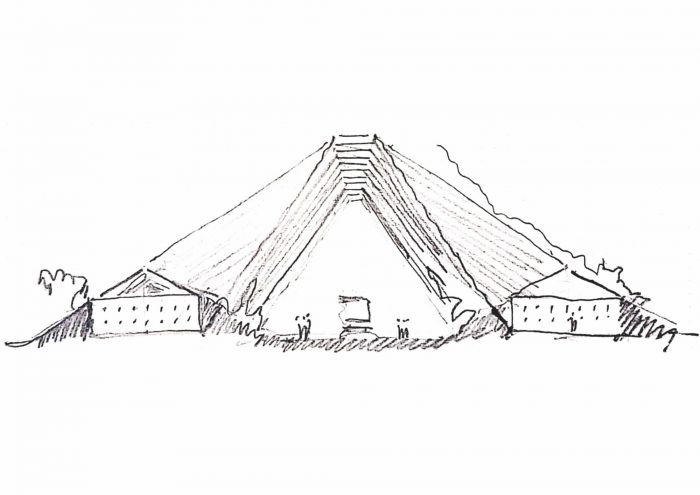塔帕丘拉火车站在20世纪初落成,具有折衷主义和艺术风格的外观,到了70年代则变成了现代主义。2005年10月,”斯坦 “飓风使铁路系统的几个部分坍塌,使火车无法运行。鉴于灾难的严重性,证明重建是不可行的。这个长期以来作为墨西哥门户的地方,以及塔帕丘拉的中心,变成了一个垃圾场;在晚上,变成了无家可归者的住房和厕所。
Tapachula´s Railway Station was inaugurated at the beginning of the 20th century; with an eclectic and art deco appearance that by the seventies would become modernist. In October 2005, Hurricane “Stan” collapsed the rail system in several sections, making it impossible for the train to function. Given the magnitude of the disaster, it proved unfeasible to rebuild. The place that long served as the gateway to Mexico, as well as the heart of Tapachula, gave rise to a garbage dump; at night, housing and latrine for homeless people.
在社区的基本行动下,这个用于文化、体育和地方记忆活动的小空间得到了拯救,在整个地区实现了由SEDATU在2019年实施的城市改进计划的干预。
Hand in hand with fundamental actions by the community, the small space for cultural, sports, and local memory activities was rescued, achieving throughout the region the intervention of the Urban Improvement Program implemented by SEDATU in 2019.
该项目旨在拯救其作为城市连接器和公共公园的特性,以及战略性地测量灵活的空间,使其成为有顶的球场、社区餐桌和娱乐空间。
The project aims to rescue its character as an urban connector and public park along with strategically measured flexible spaces to be covered courts, community dining tables, and recreational spaces.
它的概念本质来自于火车轨道所唤起的重复性质,并由一个单一的部分来解决,能够在其两侧分配小型空间,供体育、文化和社区使用,作为一个 “暴露的基础 “来支持一个19米高和32米跨度的轻型屋顶,供大型用途和公共活动使用。景观干预形成了斜坡、公共广场和社区果园,利用了当地特殊的蔬菜调色板,打破了内部和外部之间的限制,打破了建筑和存在的限制。
Its conceptual essence arises from the nature of repetition, evoked by the train tracks, and is resolved by a single section, capable of allocating small-format spaces on its sides, for sports, cultural and community use, which serves as an “exposed foundation” to support a 19 meters high and 32 meters span lightweight roof, for large-format uses and public events. The landscape intervention forms slopes, public squares, and community orchards, taking advantage of the extraordinary local vegetable palette, breaking the limits between the interior and the exterior, between what is built and what exists.
结构策略是基于张力元素,尽管有地震和风力方面的考虑,但在大跨度的情况下仍能保持纤细。色调来自于这个地方,塔帕丘拉是墨西哥最大的竹子生产地,此外,钢和混凝土作为加固元素,促进了所有空间的交叉通风和自然照明。
The structural strategy is based on tension elements that allow slenderness in the large span, despite seismic and wind considerations. The color palette arises from the place, being Tapachula the largest bamboo producer in Mexico, in addition to steel and concrete as reinforcement elements that promote cross ventilation and natural lighting in all spaces.
老火车站恢复了其原有的特征,发现了其结构元素和墙壁的原始纹理,以及社区已经恢复的文化空间的本质和塔帕丘拉中心的记忆。
The Old Station recovered its original character, uncovering the structural elements and the original texture of its walls, as well as the essence, already recovered by the community, of the cultural space and the memory of the heart of Tapachula.
Architects: Colectivo C733
Area : 77500 ft²
Year : 2021
Photographs :Rafael Gamo
Lead Architects : Gabriela Carrillo, José Amozurrutia, Carlos Facio, Eric Valdez, Israel Espín
Agency : SEDATU
Designer Team : Álvaro Martínez, Israel Carrión, Fernando Venado
Executive Architect : Vectores Urbanos
Structural Engineering : LABG and GIEE
Mechanical And Electrical Engineering : Enrique Zenón
Illumination Design : Carlos Hano – Lightchitects Studio
Landscape Design : Taller de Paisaje Hugo Sánchez
Bamboo Consultant : BAMBUTERRA (Verónica Correa, Luisa Correa)
Renders : Pedro Lechuga
Models : TEMAS MX
Restoration Project : Hans Kabsch
Contractor : CRUM – Martín García
Client : SEDATU, Municipio de Tapachula
Program : Cultural
City : Tapachula de Córdova y Ordoñez
Country : Mexico

